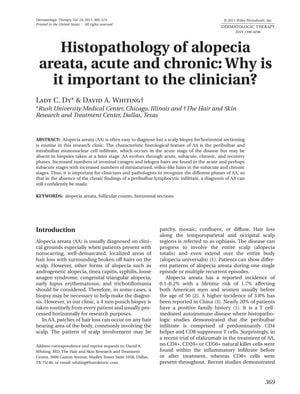TLDR Recognizing the different stages of alopecia areata is crucial for accurate diagnosis and treatment.
The document highlighted the significance of recognizing the histological stages of alopecia areata (AA) for proper diagnosis and treatment. AA, a T cell-mediated autoimmune disease, shows a peribulbar lymphocytic infiltrate in the acute stage, which may be absent in later stages. The disease has acute, subacute, chronic, and recovery phases, with histological changes including variations in terminal catagen and telogen hairs and an increase in miniaturized hairs. Horizontal sectioning of scalp biopsies is recommended for diagnosing AA, particularly when typical histological signs are missing, as it allows for the evaluation of hair follicle density and hair cycle stages. The document also mentions the discovery of the AA gene and the potential role of the arrector pili muscle and bulge in reversing follicular miniaturization, which could lead to new treatments. Accurate diagnosis is essential for both the physician and patient.
717 citations
,
June 2010 in “Nature” Alopecia areata involves both innate and adaptive immunity, with specific genes linked to the disease.
275 citations
,
November 2002 in “International Journal of Dermatology” Alopecia areata mainly affects young people and has significant psychological impacts, especially in males.
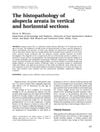 19 citations
,
December 2001 in “Dermatologic Therapy”
19 citations
,
December 2001 in “Dermatologic Therapy” Horizontal scalp biopsy sections are better for diagnosing alopecia areata, showing fewer hair follicles and more miniaturized hairs.
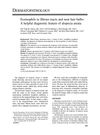 64 citations
,
July 1997 in “Journal of The American Academy of Dermatology”
64 citations
,
July 1997 in “Journal of The American Academy of Dermatology” Finding eosinophils near hair bulbs helps diagnose alopecia areata.
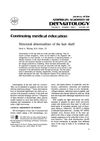 126 citations
,
January 1987 in “Journal of The American Academy of Dermatology”
126 citations
,
January 1987 in “Journal of The American Academy of Dermatology” The document concludes that understanding hair structure is key to diagnosing hair abnormalities and recommends gentle hair care for management.
March 2023 in “Nigerian Journal of Clinical Practice” The main difference in hair loss for lupus patients is smaller and fewer sebaceous glands.
 1 citations
,
September 2022 in “Journal of The American Academy of Dermatology”
1 citations
,
September 2022 in “Journal of The American Academy of Dermatology” Baricitinib helps grow eyebrows and eyelashes in severe alopecia areata patients.
 August 2018 in “Oxford University Press eBooks”
August 2018 in “Oxford University Press eBooks” The document's conclusion cannot be provided because the document cannot be parsed.
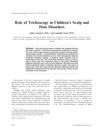 43 citations
,
August 2013 in “Pediatric Dermatology”
43 citations
,
August 2013 in “Pediatric Dermatology” Trichoscopy is good for diagnosing and monitoring hair and scalp problems in children but needs more research for certain conditions.
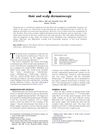 245 citations
,
March 2012 in “Journal of The American Academy of Dermatology”
245 citations
,
March 2012 in “Journal of The American Academy of Dermatology” Dermatoscopy is useful for identifying different hair and scalp conditions and can reduce the need for biopsies.
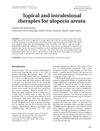 36 citations
,
May 2011 in “Dermatologic therapy”
36 citations
,
May 2011 in “Dermatologic therapy” No treatments fully cure or prevent alopecia areata; some help but have side effects or need more research.
Trichotillometry can measure hair plucking force, aiding alopecia treatment evaluation.
 5 citations
,
October 1988 in “Clinics in Dermatology”
5 citations
,
October 1988 in “Clinics in Dermatology” Minoxidil promotes hair growth but exact mechanism is unknown.
